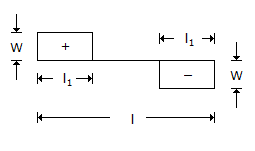Civil Engineering - UPSC Civil Service Exam Questions
Exercise : UPSC Civil Service Exam Questions - Section 3
- UPSC Civil Service Exam Questions - Section 14
- UPSC Civil Service Exam Questions - Section 27
- UPSC Civil Service Exam Questions - Section 26
- UPSC Civil Service Exam Questions - Section 25
- UPSC Civil Service Exam Questions - Section 24
- UPSC Civil Service Exam Questions - Section 23
- UPSC Civil Service Exam Questions - Section 22
- UPSC Civil Service Exam Questions - Section 21
- UPSC Civil Service Exam Questions - Section 20
- UPSC Civil Service Exam Questions - Section 19
- UPSC Civil Service Exam Questions - Section 18
- UPSC Civil Service Exam Questions - Section 17
- UPSC Civil Service Exam Questions - Section 16
- UPSC Civil Service Exam Questions - Section 15
- UPSC Civil Service Exam Questions - Section 1
- UPSC Civil Service Exam Questions - Section 13
- UPSC Civil Service Exam Questions - Section 12
- UPSC Civil Service Exam Questions - Section 11
- UPSC Civil Service Exam Questions - Section 10
- UPSC Civil Service Exam Questions - Section 9
- UPSC Civil Service Exam Questions - Section 8
- UPSC Civil Service Exam Questions - Section 7
- UPSC Civil Service Exam Questions - Section 6
- UPSC Civil Service Exam Questions - Section 5
- UPSC Civil Service Exam Questions - Section 4
- UPSC Civil Service Exam Questions - Section 3
- UPSC Civil Service Exam Questions - Section 2
16.
Total elongation of a prismatic bar of length L, weight W, cross-sectional area A and modulus of elasticity E, under its own weight, while hanging vertically, is
17.
For a partially saturated soil, Δu the increase in pore water pressure, when no drainage is permitted, is expressed as (where A and B are Skempton's pore pressure parameters and Δσ1 and Δσ3 are major and minor principal stress increments)
18.
The shear force diagram for a simple supported beam of span 'l' is given in the figure. The maximum bending moment is


19.
A compound bar consisting of material A and B is tightly secured at the ends. The coefficients of thermal expansion of A is more than that of B. When the temperature is increased the stresses induced will be
20.
Couple M is applied at C on a simply supported beam AB. What is the maximum shear force for the beam ?


Quick links
Quantitative Aptitude
Verbal (English)
Reasoning
Programming
Interview
Placement Papers





